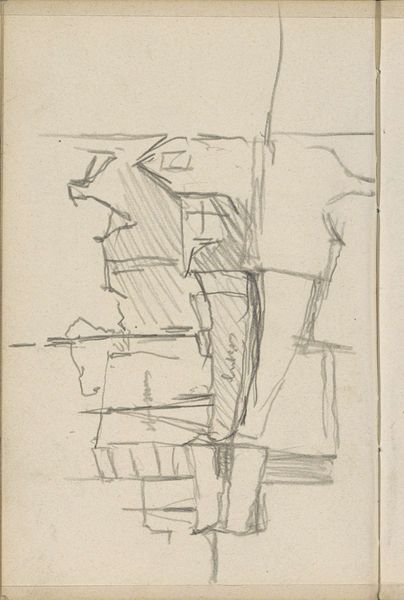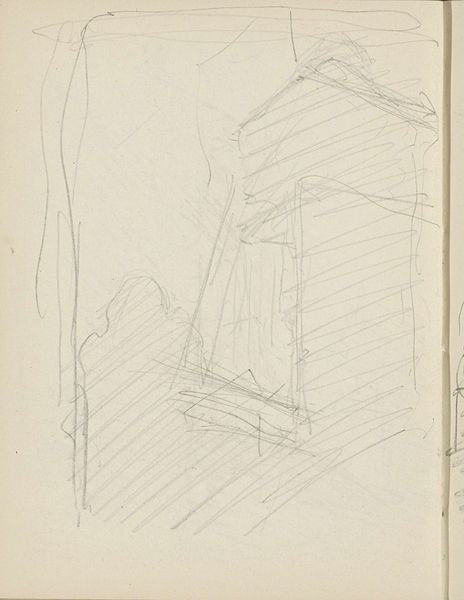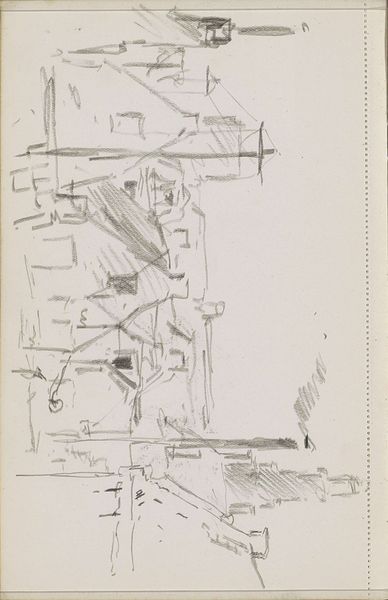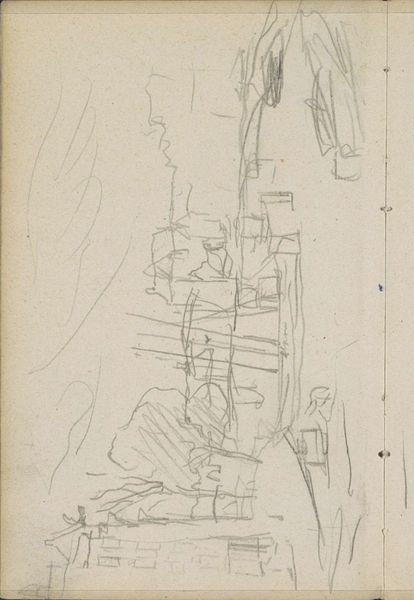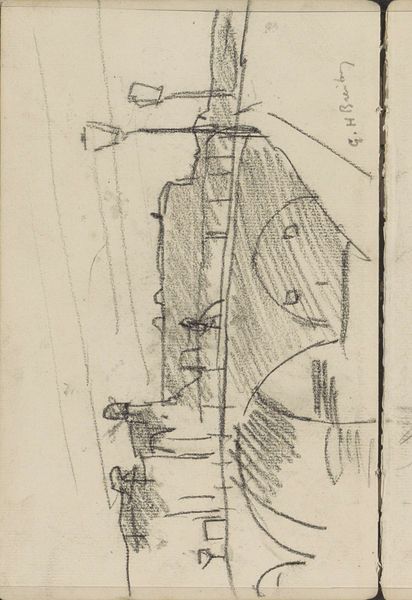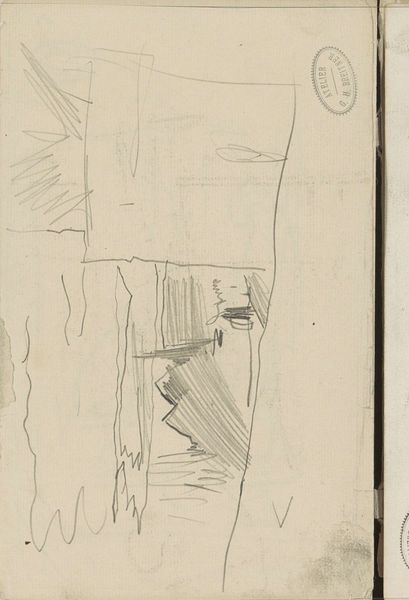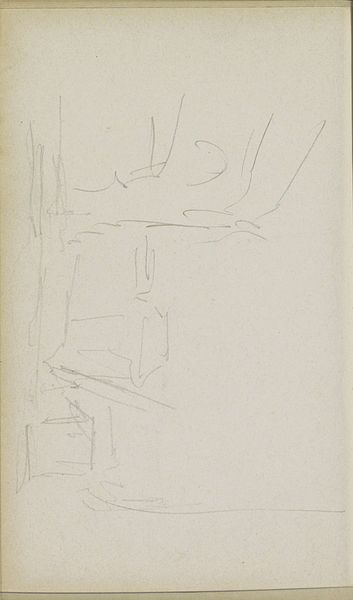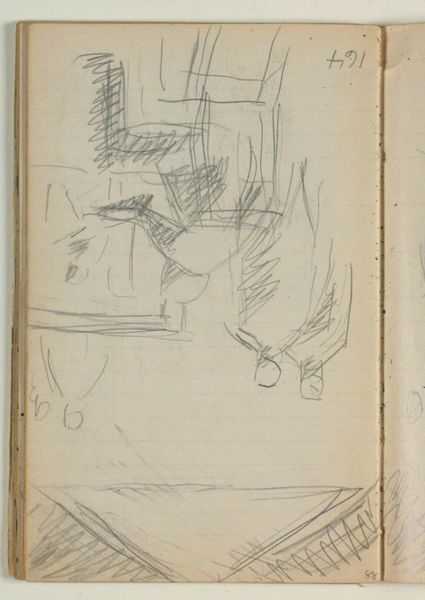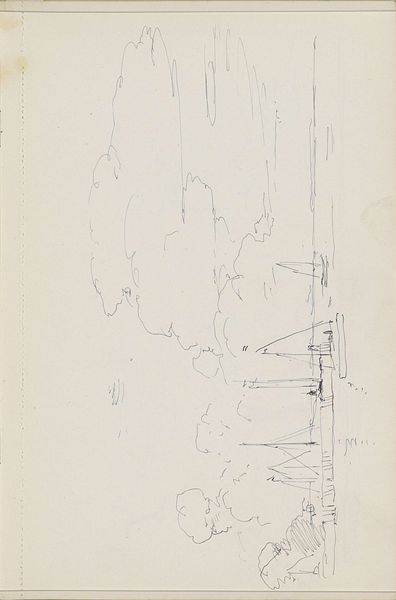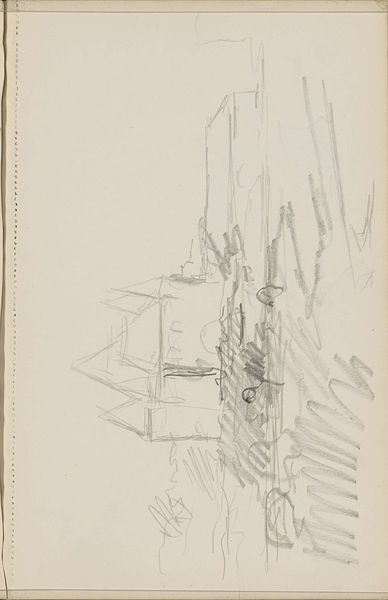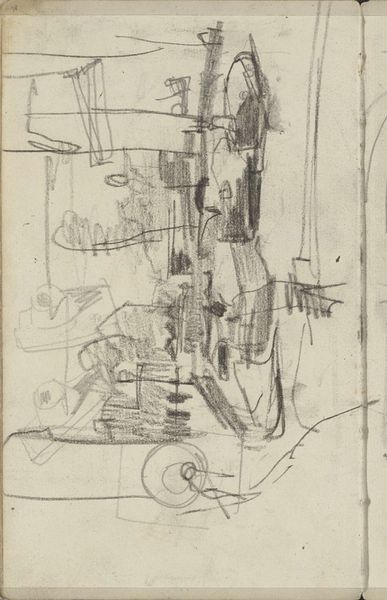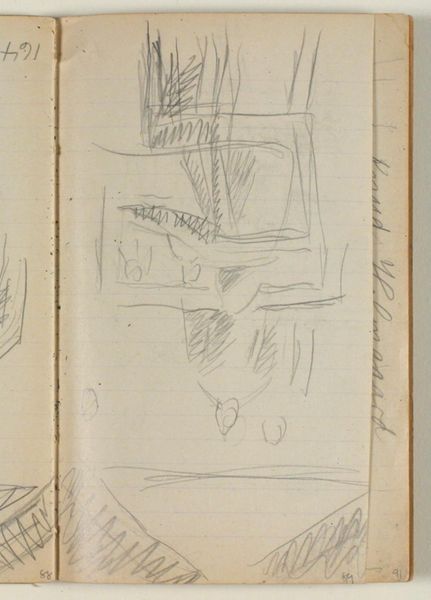
drawing, graphite, architecture
#
drawing
#
geometric
#
graphite
#
architecture
Copyright: Rijks Museum: Open Domain
Editor: This is "Architectuur," or "Architecture," a graphite drawing made sometime between 1906 and 1945 by Reijer Stolk. It's currently at the Rijksmuseum. It looks like a preliminary sketch. The lines are so raw and unrefined. What do you see in this piece? Curator: I see a reflection of the intense social and political upheaval happening in Europe during that period. The geometric forms, though rough, suggest a yearning for order and structure amidst chaos. Do you think the sketch's incompleteness reflects something about the pre-war and inter-war unease, a sense of projects being started, but perhaps never finished? Editor: That's a compelling idea. It didn't strike me that way initially. I was just thinking about artistic process, the underdrawings, but putting it into its socio-political context makes the sketch feel so different. Curator: Exactly! Consider how the Bauhaus movement, for instance, was responding to similar societal shifts with its emphasis on functional design. Could this sketch be Stolk's personal exploration of those ideas? Or even a rejection of them? The choice to use graphite, a humble material, speaks to a different aesthetic sensibility compared to the grand architectural visions promoted by authoritarian regimes of the time. What kind of power dynamics were in play here? Who got to design whose spaces, and why? Editor: So it’s not just about architecture, but also about who has the power to build, and what that says about society. I never would have looked at a sketch in quite this way. Thank you! Curator: And thank you! It is in our shared, ongoing conversations about the cultural meaning, power, and politics embedded in an artwork that our understandings truly deepen.
Comments
No comments
Be the first to comment and join the conversation on the ultimate creative platform.
